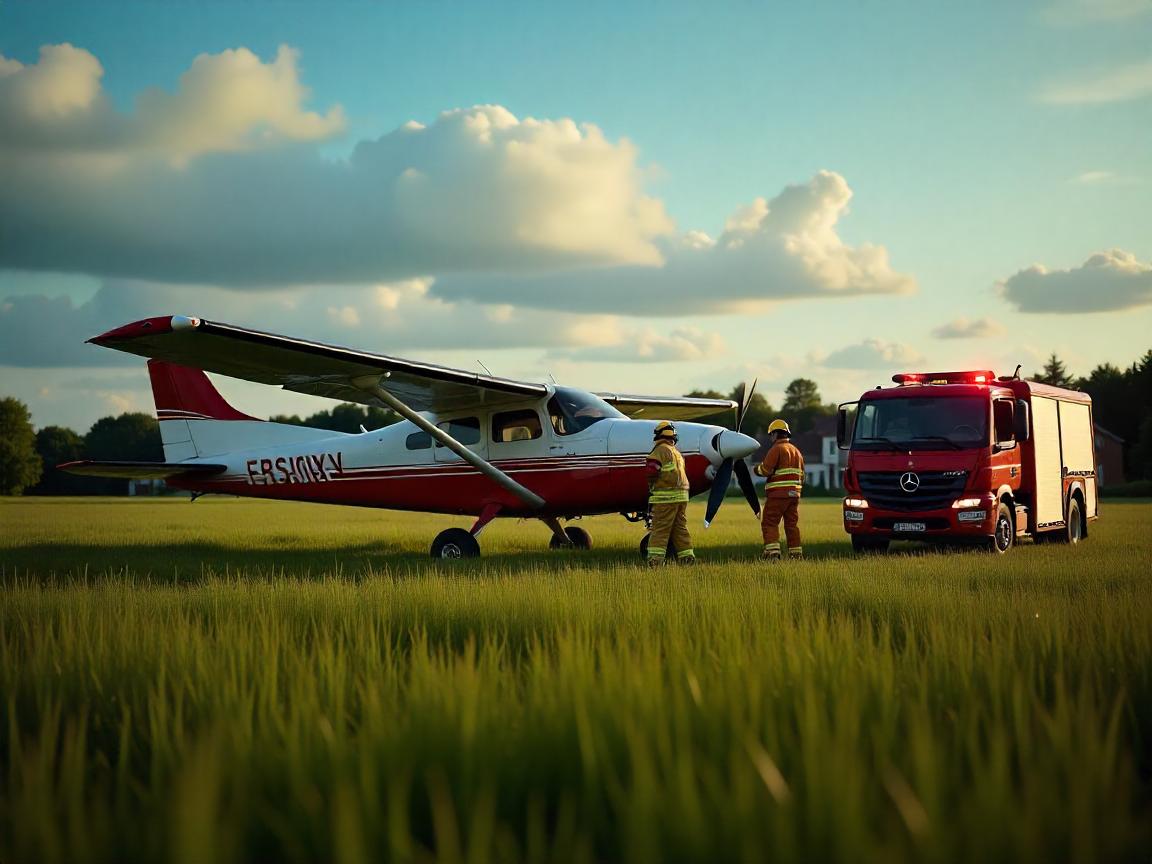Wednesday, July 9, 2025
Belgium’s aviation community faced a dramatic moment on 9 July when a Reims-Cessna FA152 Aerobat, registered OO-VCL, made an emergency crash landing near Grimbergen Airfield, close to Brussels Airport. Although the aircraft sustained damage and prompted an emergency response, no injuries were reported—a fortunate outcome highlighting both the resilience of aircraft design and the professionalism of local emergency teams.
The incident brings fresh attention to general aviation safety across Europe and underscores the vigilance required as the sector grows alongside surging private aviation demand.
Emergency Landing in Meise Draws Swift Response
The Reims-Cessna FA152, a light single-engine aerobatic aircraft, went down in the town of Meise, situated a few kilometres north of Brussels Airport and near Grimbergen Airfield—a popular hub for general aviation and training flights in the Flemish Brabant region.
Reports indicate that the pilot executed an emergency landing after encountering unspecified difficulties mid-flight. Fire and rescue teams from Brandweerzone Vlaams-Brabant West quickly arrived on scene. Their immediate tasks included securing the crash site, managing a minor fuel leak, and ensuring no secondary hazards arose in the residential area.
While details on the exact cause remain under investigation, initial information suggests that mechanical issues may have contributed to the forced landing. Such occurrences, though rare, emphasize why emergency response readiness and stringent maintenance protocols remain central to aviation operations, regardless of aircraft size.
A Close Call in a Busy Air Corridor
Grimbergen Airfield sits within one of Belgium’s most congested airspaces. Proximity to Brussels Airport means even small aircraft must navigate a complex web of commercial flight paths, approach corridors, and airspace restrictions.
On any given day, the skies around Meise see everything from light aircraft training flights to heavy commercial jets on final approach into Brussels. For pilots, maintaining strict communication with air traffic control and adhering to pre-planned flight paths is critical.
This incident is a reminder that even seasoned pilots operating in familiar airspace can face unforeseen challenges. It underscores the importance of comprehensive training and the ability to execute emergency procedures under pressure.
Spotlight on General Aviation Safety in Europe
While commercial aviation tends to capture headlines, Europe’s general aviation sector is vast and increasingly significant. From flight schools to private aircraft owners and small charter services, thousands of flights crisscross European skies daily.
Regulatory bodies like EASA (European Union Aviation Safety Agency) maintain rigorous oversight of this segment, focusing on pilot training standards, aircraft maintenance schedules, and operational safety. Yet incidents like the Meise crash-landing show that risks remain inherent in aviation, especially among older aircraft models or those involved in aerobatic training, where stress on airframes can be higher.
For industry professionals, incidents like this prompt a renewed emphasis on safety audits, recurrent training, and investment in modern avionics that can help pilots handle emergencies more effectively.
Minimal Disruption but Lingering Questions
From a travel industry perspective, the crash-landing near Brussels caused minimal operational disruption. No commercial flights were delayed or diverted at Brussels Airport, and Grimbergen Airfield resumed normal operations shortly after emergency crews secured the area.
However, the incident raises important questions about how smaller airfields coexist with major commercial hubs. As private flying grows in popularity—spurred in part by pandemic-era interest in private travel—airspace near major cities becomes ever more congested. Aviation planners will need to continue refining rules and procedures that balance the demands of general aviation against the intense operational needs of large international airports.
The Aircraft: A Workhorse of Flight Training
The Reims-Cessna FA152 Aerobat involved in the crash-landing is no stranger to European skies. Produced under license in France, this model has long been a staple of flight schools due to its stable handling and aerobatic capabilities.
Used extensively for both initial pilot instruction and advanced maneuvers, the FA152’s robust design has earned it a reputation as a reliable trainer. However, many of these aircraft are now several decades old, emphasizing the importance of meticulous maintenance and regular technical inspections to prevent mechanical failures.
Operators across Europe will likely examine this incident closely to assess whether further maintenance directives or safety checks should be mandated for similar aircraft.
Industry Reaction and Next Steps
Aviation professionals have praised the rapid response from emergency services, noting that the absence of injuries speaks to both effective pilot action and swift ground support. However, the incident serves as a sobering reminder that no flight, however routine, is immune to technical or operational challenges.
Authorities will conduct a thorough investigation to determine the cause of the emergency landing. Meanwhile, flight schools and private pilots operating near major airports like Brussels will be reminded of the crucial importance of pre-flight checks, emergency preparedness, and adherence to airspace regulations.
For the wider travel and aviation sector, incidents like this, even when minor, can influence public perceptions of flying safety. Maintaining trust means not only responding to emergencies but proactively communicating about safety measures and regulatory oversight that keep skies secure for both private and commercial aviation.
A Safe Outcome, but Vigilance Must Continue
While the Reims-Cessna crash-landing in Meise resulted in no casualties, its echoes will reverberate through Europe’s aviation community for months to come. For pilots, regulators, and airport authorities, it underscores the delicate balance required to manage busy skies shared by both commercial giants and nimble private aircraft.
As general aviation continues to grow, fueled by evolving tourism trends and private travel demand, the incident near Grimbergen serves as a timely reminder: in aviation, preparedness, training, and rigorous safety culture remain paramount.
The skies over Brussels—and Europe—remain among the safest in the world, but every event like this one renews the industry’s commitment to keeping them that way.
Tags: air traffic management, aircraft emergency, Airline News, Aviation industry, aviation safety, Belgium, Brussels, easa, European Aviation Safety, general aviation, Grimbergen Airfield, Meise, private aviation, travel disruptions, travel industry
